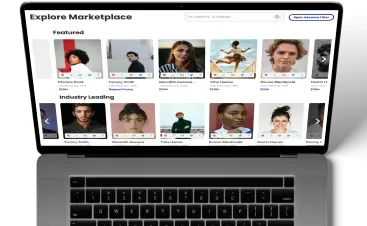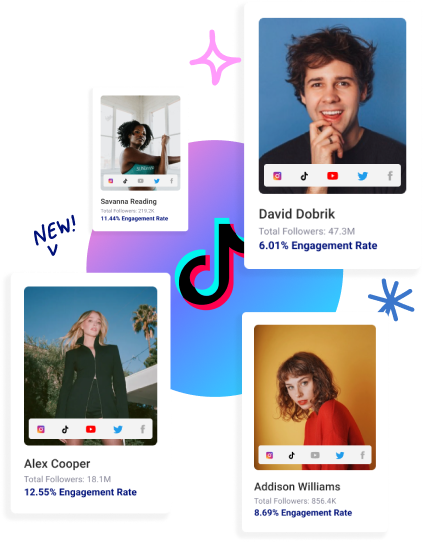Content strategy is an important tool that can help your business succeed if done well. It doesn’t matter if you have a big, multinational company or a small, local business – content strategy can work for you. It’s like a roadmap that shows you the fastest and easiest way to reach your marketing goals. Many brands hire content creators from the content creator marketplace to help them stand out from their competition. This guide will teach you everything you need to know about content strategy. Whether your business is big or small, and whether you’re an expert or just starting, you’ll learn how to create an effective content strategy. You’ll find out what content strategy is, why it’s useful, and how to develop a content marketing strategy for your brand. By following a well-designed content strategy, you can attract your target audience and grow your business more successfully.
What Is Content Strategy?
A content strategy is a plan for using content marketing to achieve your business goals. It’s a roadmap that guides you in creating and sharing valuable and engaging content with your audience. The main purpose is to attract potential customers and lead them through the buyer’s journey – from first becoming aware of your product/service, to considering it, and finally purchasing from you. But it also helps retain existing customers and turn them into advocates for your brand.
Why Is Content Strategy Important?
A content strategy helps you create purposeful content that matches your business goals and what your target audience wants. Writing down your content strategy is very important. A report in 2023 found that 80% of the most successful content marketers had documented their strategy. Content strategy is important because it lets you tell a clear and consistent story about your business across all your content. Every blog post, video, social media update, etc. contributes to your overall narrative. With a good content strategy in place, you ensure this story makes sense and connects with your audience meaningfully.
The story you tell through your content does several key things:
- It educates and provides value to your audience. Utilizing your content strategy teaches them about topics they care about and helps solve their problems. This builds trust and keeps them engaged.
- It establishes you as an expert in your field. By consistently creating high-quality and informative content, you demonstrate deep knowledge and experience. Your audience starts to see you as a go-to authority.
- Also, it shows what makes your business unique and important. Your content marketing narrative communicates your brand personality, core values, and what sets you apart from competitors. It explains why your products/services truly matter.
Without a cohesive content strategy guiding your efforts, your messaging becomes scattered and disconnected. But with one in place, you can control the overarching narrative about your brand. You decide how to position yourself and what story to tell your audience.
Step-by-Step: How to Create an Effective Content Strategy?
We will go through the steps to develop a content strategy. There are six simple steps. Following these steps helps businesses make content for the people they want to reach. The content will match the business goals. The content will also fit the money and staff the business has. Going through each step ensures the content reaches many people and has a big impact. Small businesses and big companies can both follow these steps for developing a content marketing strategy. It will help make a custom content strategy to get people interested in the business.
Step 1: Learn About Your Audience
Let’s start by thinking about your audience and current customers. Knowing who they are will help you make content that feels real and useful for them. Your content strategy will then do a better job of helping your business. Remember, your content audience can be bigger since you want to get people interested at all stages. So think about a wide set of problems and topics, not just your product.
Here are some important things to do:
- Understand the different customer groups you want to target and what content they may like
- Make a list of their goals, challenges, and questions
- Find out where they get content: social media, blogs, search engines?
- Learn what types of content they prefer: videos, articles, etc.
To research your audience, you can send surveys, talk to your sales team, look at website data, and read social media/online groups where your audience hangs out. This will tell you what topics they care about.
Step 2: Research Other Companies
Many other companies are trying to get attention from your audience. So you need to know who they are, what they are doing, and where they are sharing content.
This is called competitor research. You can start by searching topics related to your business online and looking at the top websites that come up.
Try to answer these questions:
- What topics do they cover in their content? What types of content do they make – blog posts, videos, templates?
- What channels are they using to share content? Look for links to their social media.
- Where do they get the most engagement and interaction from people? Check likes, shares, and comments.
- What keywords do they rank for in search engines? Which of their pages gets the most traffic?
You can use special tools to analyze things like website traffic and search rankings for competitors’ content. A content creator can help you stand out from the crowd. You can find content creators for brands easily through an influencer marketing platform.
Step 3: Set Your Goals
Now that you know about your audience and competitors, you can set your main goals for content marketing: more revenue, customers, brand awareness, etc. These goals should match what your business wants to achieve soon. Having clear goals lets you measure if your content is successful or not. Then you can improve and optimize what you create.
It’s best if your goals follow the SMART format: Specific, Measurable, Achievable, Relevant, Time-bound.
Here are some example content goals:
- Brand Awareness: Connect with a new audience. SMART goal: Get 10% more website visitors and 15% more social media followers through new content in 3 months.
- Lead Generation: Build a list of potential customers. SMART goal: Get 250 new email signups interested in our home tech products by December.
- Increase Engagement: Get more interaction through comments, likes, and shares. SMART goal: Use interactive quizzes to increase social media engagement by 25% in 3 months.
- Client Retention: Keep current customers coming back. SMART goal: Increase customer retention by 40% with helpful newsletters and exclusive deals.
- Lower Acquisition Costs: Drive more qualified traffic to your website through SEO content to reduce paid ad costs over time.
The key is making your goals very clear and specific so you can easily track your content’s performance.
Step 4: Plan Your Message and Voice
Your content strategy also needs to cover what you want to say and how you want to say it. This is called your message and brand voice.
For your message, think about:
- What you want to achieve (like selling more eco-friendly home products)
- What your audience needs (like tips on sustainable decorating)
Combine these two things to figure out the right message.
Your brand voice is like your personality. It helps show your brand’s values. Are you an exciting go-getter brand? An inspiring innovator? Or a calm, guiding voice? Think about the type of company you are. Your voice should match your brand personality. A meditation app will have a different voice than an energy drink brand.
Step 5: Make a High-Level Plan
A content marketing plan outlines what you need to execute your strategy. When making it, consider:
- Topics you’ll cover in your content
- Formats you’ll create (blogs, videos, etc.)
- Tools needed for production, management, etc. (Canva, Semrush, Trello, etc.)
- People needed to produce, edit, and publish content
- Budget required
- Metrics to measure performance
- Channels to promote and distribute your content
Then create a content calendar to organize your efforts and stay on track. The calendar lists all the content you plan to publish.
Step 6: Track Your Performance
It’s important to track results so you know if your content strategy is working. You need a set of key performance indicators (KPIs) tied to your goals.
Common content marketing KPIs include:
- Website Traffic: How many people visit your site from your content?
- Leads: How many potential customers sign up or fill out a form?
- Conversion Rates: What percentage of visitors become paying customers?
- Social Engagement: How many likes, comments, and shares does your content get?
- Website Engagement: How do visitors interact and move through your site?
- Cost Per Lead: How much does each lead cost to get from your content?
- Return on Investment (ROI): How much revenue does your content generate compared to costs?
Conclusion
You now understand the main steps to create an effective content plan. You’ve learned how to research your audience and competitors, set clear goals, define your brand voice, and plan your content topics, formats, and promotion channels. Once you complete these steps, write down your full content plan covering goals, metrics, audience, mission, budget, resources, and your high-level plan. Remember, this is a flexible plan – you can adjust tactics along the way but stay focused on achieving your core goals. If this is your first content plan, don’t worry about being perfect. The most important thing is getting started and consistently working towards your content marketing goals.










